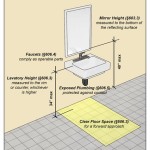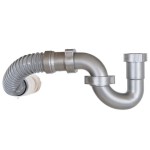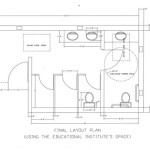How Do You Fix a Loose Bathroom Faucet Base?
A loose bathroom faucet base can be a frustrating and inconvenient problem, leading to leaks, instability, and difficulty controlling water flow. Thankfully, fixing a loose faucet base is a relatively straightforward task that homeowners can often handle themselves with the right tools and a little know-how. This article will guide you through the process, providing clear instructions and helpful tips to ensure a secure and leak-free faucet.
1. Assessing the Problem and Gathering Tools
Before diving into repairs, it's crucial to determine the cause of the looseness. Sometimes, the issue may be as simple as a loose mounting nut or a worn-out washer. Other times, the problem might stem from a damaged faucet base or loose sink mounting hardware.
To properly address the issue, you'll need the following tools:
- Adjustable wrench or basin wrench
- Phillips screwdriver
- Flathead screwdriver
- Teflon tape
- Plumber's putty
- Optional: New faucet washer, new mounting nuts, or a new faucet base (depending on the diagnosis)
2. Troubleshooting and Repairing the Faucet Base
Once you have the necessary tools, follow these steps to diagnose and repair the loose faucet base:
-
Turn off the water supply.
Locate the shut-off valve for the bathroom sink and turn it off completely to prevent water damage while working. -
Inspect the faucet base.
Carefully examine the faucet base for any visible signs of damage, cracks, or missing parts. Look for loose mounting nuts, worn-out washers, or cracks in the base itself. -
Tighten the mounting nuts.
If the faucet base is simply loose due to loose mounting nuts, use an adjustable wrench or basin wrench to tighten them. Be careful not to overtighten, as this could damage the faucet or sink. -
Replace worn-out washers.
If the faucet is leaking even after tightening the mounting nuts, a worn-out washer could be the culprit. To replace the washer, unscrew the faucet handle and remove the old washer. Install a new washer and reassemble the handle. -
Check the mounting hardware.
Ensure the mounting hardware, such as screws or brackets, is securely fastened to the sink. If they are loose, tighten them using a screwdriver. -
Apply plumber's putty.
If the faucet base is still leaking, you may need to reapply plumber's putty to seal the gap between the base and the sink. Remove the old putty and carefully apply a new layer, ensuring a smooth and even spread. -
Replace the faucet base.
If the faucet base is damaged or beyond repair, you'll need to replace it. Disconnect the water supply lines, remove the faucet assembly, and install a new base.
3. Preventing Future Issues
After fixing the loose faucet base, there are several preventative measures you can take to avoid future problems:
-
Regular maintenance:
Periodically check the faucet base and mounting hardware for any signs of wear or looseness. Tighten or replace any components that are loose or damaged. -
Proper water pressure:
Excessive water pressure can stress the faucet base and lead to leaks. If you suspect high water pressure, consider installing a pressure-reducing valve. -
Avoid overtightening:
When tightening the mounting nuts, be careful not to overtighten, as this can damage the faucet or the sink. -
Use plumber's putty:
Apply a fresh layer of plumber's putty whenever removing or reinstalling the faucet base to ensure a tight seal.
By following these steps, you can effectively fix a loose bathroom faucet base and enjoy a leak-free and functional sink.

How To Fix Loose Sink Faucet

How To Tighten A Loose Bathroom Faucet

Fixed How To Tighten A Loose Kitchen Faucet Base

How To Tighten A Loose Moen Kitchen Faucet Base

How To Fix A Loose Faucet Storables

How To Tighten Faucet Handle Homeserve Usa

Loose Faucet Lever And No Set Plumbing Inspections Internachi Forum

6 Simple Steps To Tighten A Loose Moen Kitchen Faucet Base

Tighten A Loose Lever On Moen Brantford Faucet

Loose Faucet Lever And No Set Plumbing Inspections Internachi Forum
Related Posts







